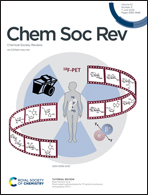Efficient and air-stable n-type doping in organic semiconductors
Abstract
Chemical doping of organic semiconductors (OSCs) enables feasible tuning of carrier concentration, charge mobility, and energy levels, which is critical for the applications of OSCs in organic electronic devices. However, in comparison with p-type doping, n-type doping has lagged far behind. The achievement of efficient and air-stable n-type doping in OSCs would help to significantly improve electron transport and device performance, and endow new functionalities, which are, therefore, gaining increasing attention currently. In this review, the issue of doping efficiency and doping air stability in n-type doped OSCs was carefully addressed. We first clarified the main factors that influenced chemical doping efficiency in n-type OSCs and then explain the origin of instability in n-type doped films under ambient conditions. Doping microstructure, charge transfer, and dissociation efficiency were found to determine the overall doping efficiency, which could be precisely tuned by molecular design and post treatments. To further enhance the air stability of n-doped OSCs, design strategies such as tuning the lowest unoccupied molecular orbital (LUMO) energy level, charge delocalization, intermolecular stacking, in situ n-doping, and self-encapsulations are discussed. Moreover, the applications of n-type doping in advanced organic electronics, such as solar cells, light-emitting diodes, field-effect transistors, and thermoelectrics are being introduced. Finally, an outlook is provided on novel doping ways and material systems that are aimed at stable and efficient n-type doped OSCs.



 Please wait while we load your content...
Please wait while we load your content...